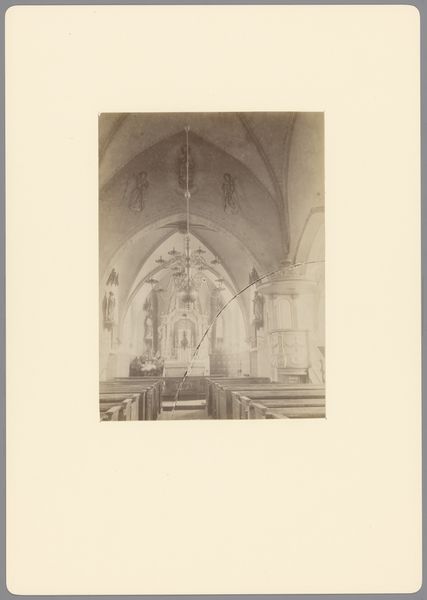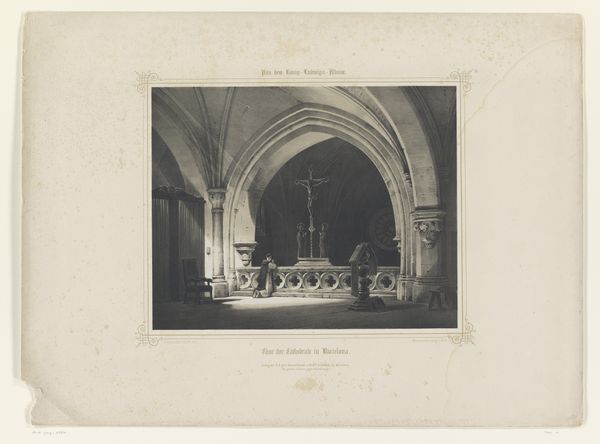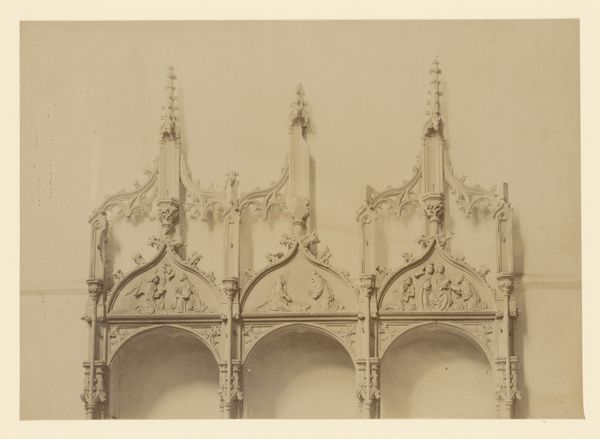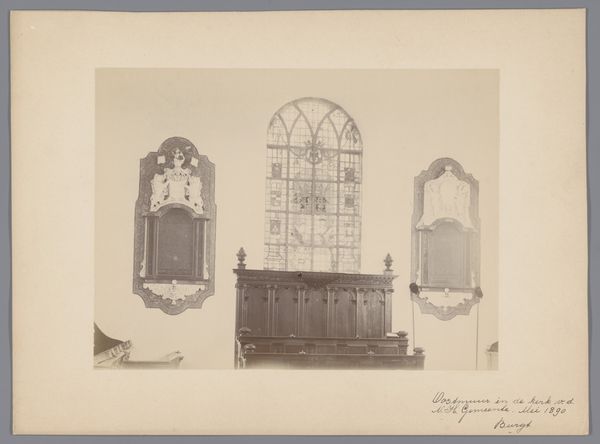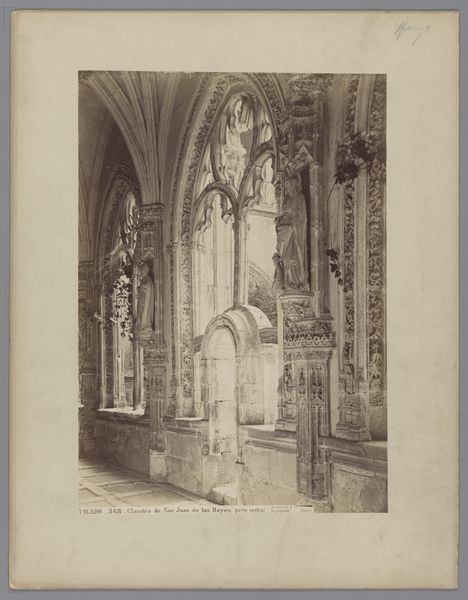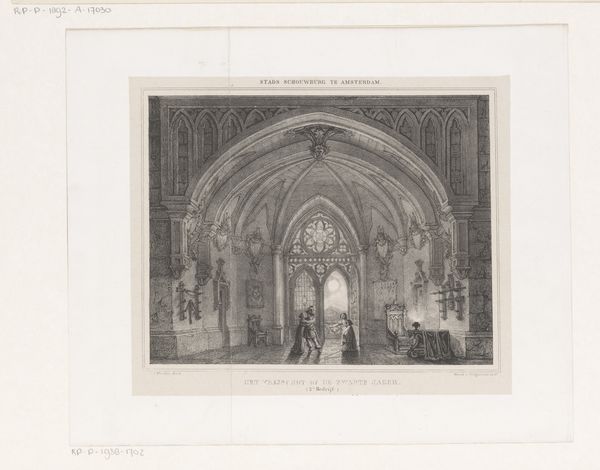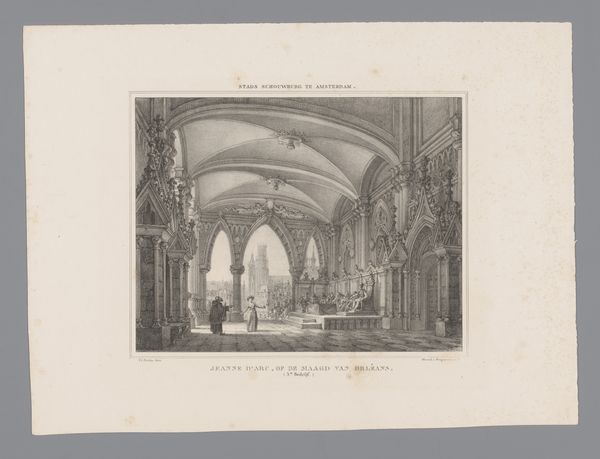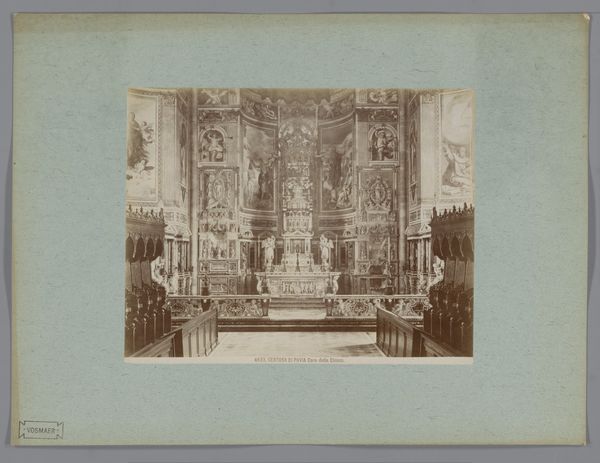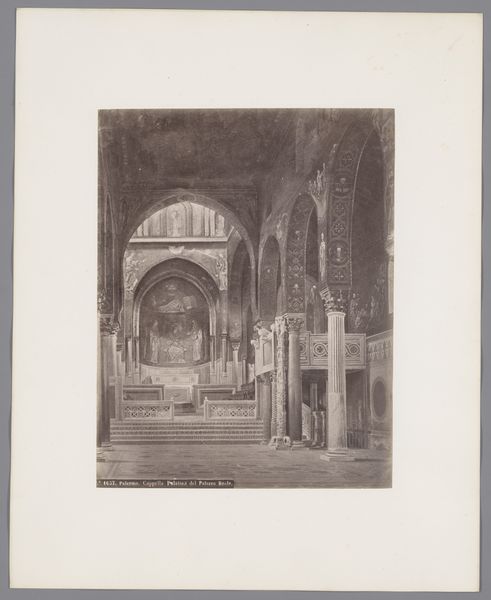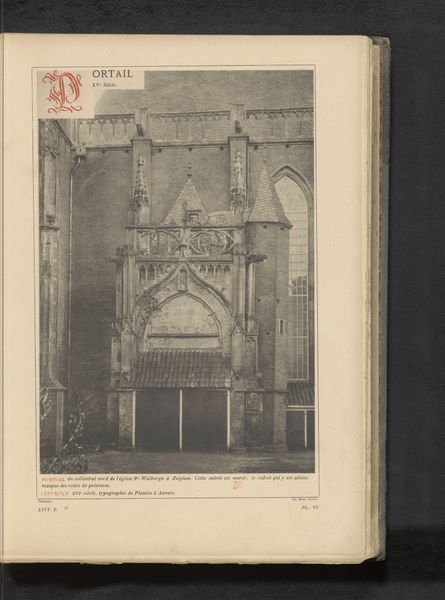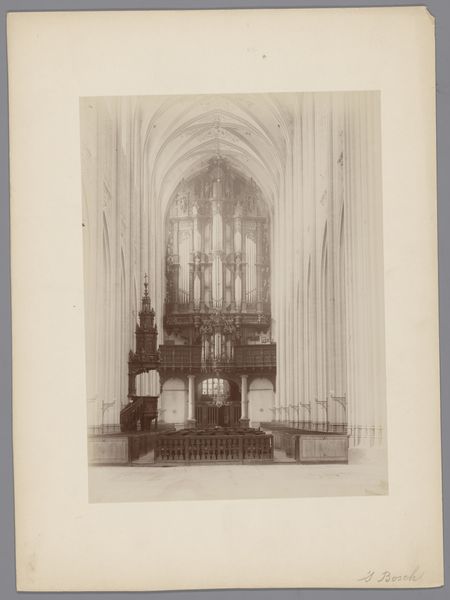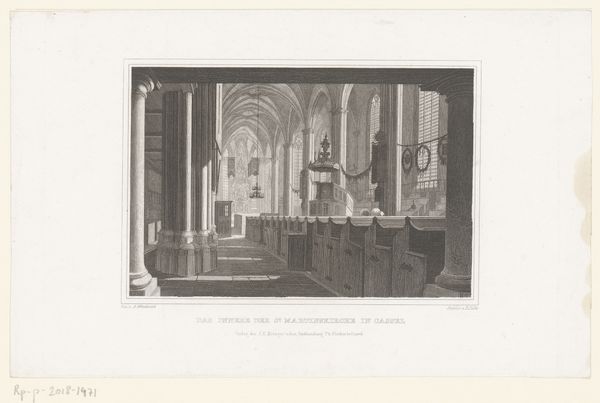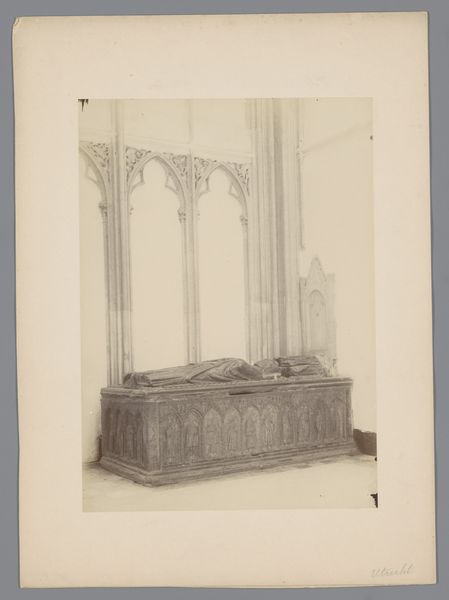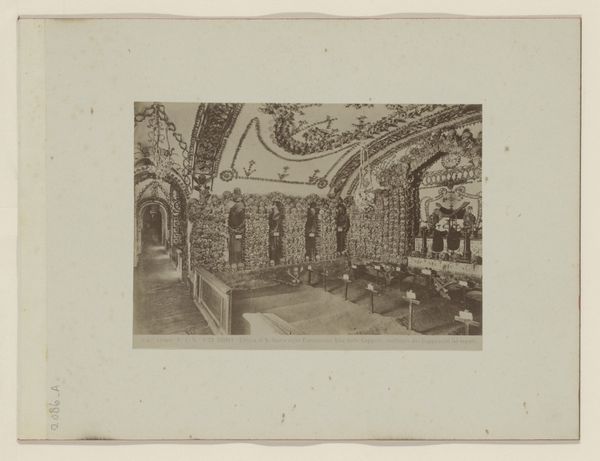
Interieur van All Saints Church te Hastings, koor en doopvont 1880 - 1900
0:00
0:00
photography, albumen-print, architecture
#
sculpture
#
landscape
#
historic architecture
#
photography
#
genre-painting
#
albumen-print
#
architecture
#
realism
Dimensions: height 84 mm, width 51 mm
Copyright: Rijks Museum: Open Domain
Editor: Here we have an albumen print, circa 1880-1900, of the interior of All Saints Church in Hastings, focused on the chancel and baptismal font. There’s a solemn feel, the monochrome emphasizing the architectural grandeur, yet also a stillness like time has paused. What catches your eye in this photograph? Curator: What I see is a documentation of materiality, process, and the societal gaze upon religious structures. This isn't just an aesthetic portrayal, but a record of resources - the stone, the glass, the wood - and the labor involved in their extraction and shaping, during a period defined by Victorian industry and class division. How were these materials sourced, and what kind of labor was used to produce this architectural scene? Editor: So, less about the spiritual and more about the sweat and materials that built this space? That is unexpected. Curator: Precisely. The architecture here embodies a specific social narrative – the established church, the social order it represents, the visual and material assertion of power. What kind of control over resource allocation does this imply? Editor: It shifts my focus completely. I initially looked at it as a landscape piece portraying interior architecture, yet you’re inviting me to consider not just WHAT is shown but HOW it came to be. Curator: Think of the technological shift that allowed for the albumen print itself. Mass reproduction impacting art's accessibility and democratizing how people interact with art – and religion, for that matter. How does this photographic method challenge pre-existing artistic modes and their inherent class connotations? Editor: That’s interesting! It forces us to reconsider the photograph not as a neutral record, but as a product of its own material conditions, embedded within a larger web of social and economic relations. Curator: Indeed! This perspective opens up the artwork beyond face value, letting us explore production and societal themes.
Comments
No comments
Be the first to comment and join the conversation on the ultimate creative platform.
